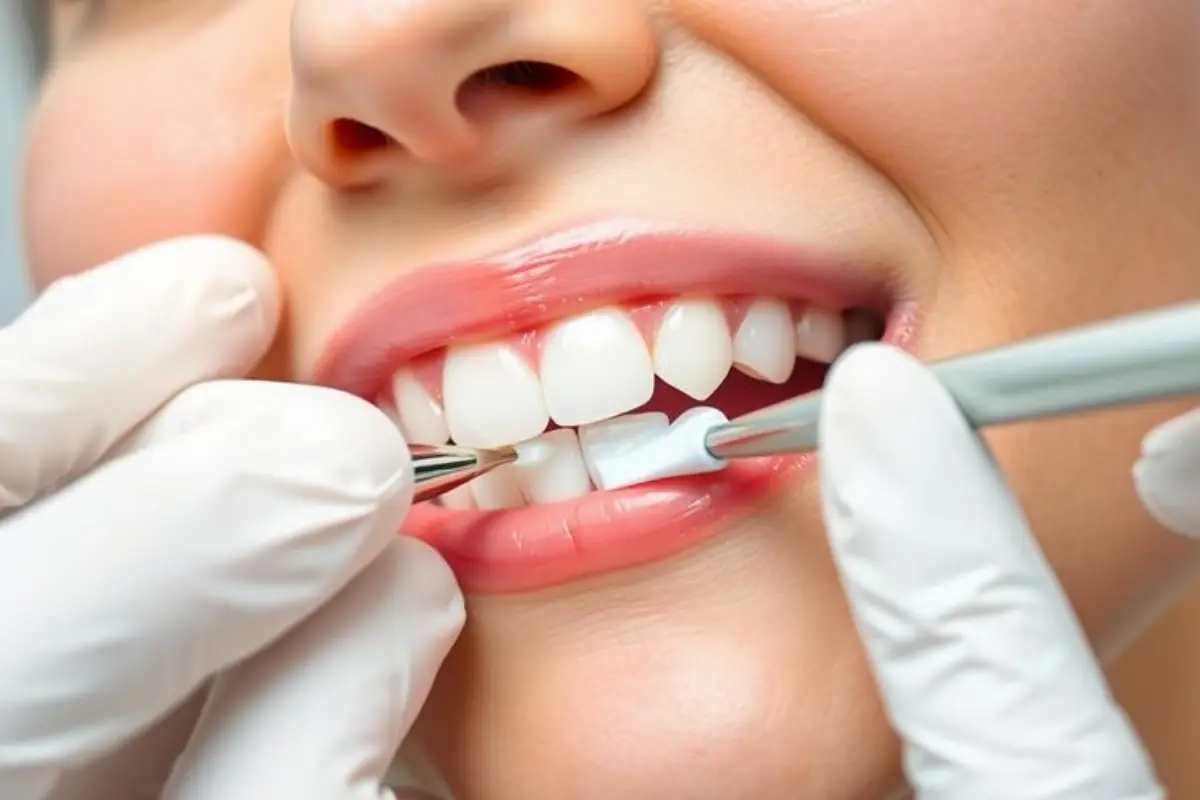


If you’ve ever chipped a tooth while eating or noticed small gaps that affect your confidence, you’re not alone. Many patients in Gresham, Portland, and nearby areas choose dental bonding as a quick, affordable way to restore their smiles.
At Premier Dentistry, we understand how even a small imperfection can make you self-conscious. That’s why our gentle, personalized dental bonding treatments are designed to make your teeth look and feel like new—without the need for extensive cosmetic work.

Dental bonding is a cosmetic dental procedure that uses a tooth-colored composite resin to repair chips, cracks, gaps, or discoloration. It’s one of the simplest and most affordable cosmetic treatments we offer—and it often takes just one visit to complete.
Think of bonding as a “quick fix” that looks completely natural. The resin is carefully matched to your natural tooth shade, applied to the surface, and then sculpted and polished by your dentist until it blends seamlessly with the rest of your smile.
Dental bonding is a simple, affordable way to enhance your smile—no veneers or crowns required. It’s a great option for patients who want natural-looking results with minimal dental work.
You may be an ideal candidate if you have:
Bonding works beautifully for both teens and adults who want to restore confidence in their smile quickly and comfortably.
Many of our patients choose dental bonding because it’s:
Affordable: Compared to veneers or crowns, bonding costs significantly less per tooth.
With proper care, dental bonding can last 5 to 10 years or more. Longevity depends on your oral habits and the type of bonding performed.
At Premier Dentistry, we also offer touch-up and re-polishing services to keep your bonded teeth bright and smooth.
Many patients wonder how bonding compares to veneers. Here’s a simple breakdown:
| Feature | Dental Bonding | Veneers |
|---|---|---|
| Cost | More affordable per tooth | Higher cost per tooth |
| Duration | 5–10 years | 10–15 years |
| Procedure Time | 1 visit | 2+ visits |
| Enamel Removal | Minimal to none | Some enamel removed |
| Ideal For | Small chips, gaps, stains | Major shape/color changes |
If you’re unsure which option is best, we’ll help you decide based on your goals, budget, and smile needs. Many patients start with bonding and later upgrade to veneers once they’re ready for a full smile transformation.
At Premier Dentistry, we believe a confident smile should be within everyone’s reach. That’s why we offer:
If bonding is needed to repair a damaged or decayed tooth, your insurance may cover a portion of the treatment as a restorative service. Our front desk team will walk you through all your options before you commit to anything.
Choosing the right dentist for your cosmetic treatment makes all the difference. Patients across Gresham, Portland, Fairview, and Troutdale trust Premier Dentistry because of our:
After bonding, you can resume normal activities right away—but here are a few expert tips to keep your results flawless:
If your bonding ever chips or feels rough, give us a call. Repairs are usually simple and quick!
Want to keep your smile looking perfect? Check out our blog on “Teeth Bonding Aftercare Tips” for more expert guidance on protecting your newly bonded teeth and maintaining a confident, radiant smile every day!
Not at all. Most patients feel no discomfort. If a tooth needs slight reshaping or repair, a small amount of numbing may be used.
Usually 30 to 60 minutes per tooth—you’ll be in and out the same day.
Yes, over time bonding can stain slightly. Regular cleanings and good oral hygiene help keep your bonded teeth bright.
If it’s done for restorative reasons (like repairing a broken tooth), insurance may cover part of the cost. Our team can verify your coverage.
Bonding material doesn’t whiten like natural enamel, so it’s best to whiten your natural teeth before bonding for the best color match.
Ready to Fix Chips or Gaps? Let’s Bring Back Your Smile.
Your smile deserves to shine again—and at Premier Dentistry, we make it easy. Whether you need to fix a chipped tooth or enhance your entire smile, our team is here to guide you with gentle, personalized care.
Ready to find your dentist near me in Gresham? At Premier Dentistry, we’re excited to welcome you to our dental clinic.
Don’t wait—join the Premier Dentistry family today and experience why we’re the top Gresham dentist for new patients.